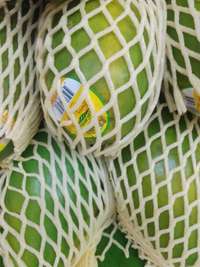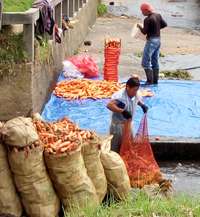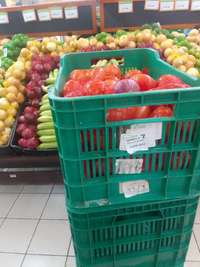Food production is important, but farmers must also protect against crop loss prior to consumption or sale. Fresh fruit and vegetables are high in value but susceptible to spoilage. Improving post-harvest practices helps farmers make profitable sales. This can be a difference between a successful farming business and simply growing crops.
Consider all the needed handling of produce so that it is of acceptable ripeness and quality to the end user. Depending on the value chain, the end user could be an intermediary or the ultimate consumer of fresh produce.
Many postharvest practices require large-scale investment in infrastructure and/or energy. Transporters and harvesters prioritize their own economies, making it hard for small-scale farmers to gain income. Intermediaries and retailers generate most profit off-farm, with processes unavailable to the small-scale farmer. This article concentrates on simple postharvest practices small-scale farmers can implement to increase their earnings from harvested produce.
Harvest
Proper harvesting of fruits and vegetables is the first step in a lengthy process culminating in sale and consumption. Reducing damage (bruises, cuts, surface abrasions, or crushing) during harvest improves quality at this stage in the value chain. Wagner et al. (2000) identified bruising as the number one postharvest injury to tomatoes. Motis (2022) provides examples of simple practices such as harvest bags and gentle handling that small-scale producers can apply.
Leaving some crops in the field until sale or transport is possible. Farmers leave crops such as carrots (Daucus carota), sweet potatoes (Ipomoea batatas), cassava (Manihot esculenta; roots), and potatoes (Solanum tuberosum; tubers) in the field until they are sold or transported. Watch for crop exposure to pests and diseases until the sale.

Figure 7. Foam mesh protecting papaya and allowing ventilation. Applied by workers in the field during harvest. Source: Robert Walle
Protective Layers. Many farmers use crop leaves to protect harvested crops during transport. This is most common for Cruciferous crops (broccoli, cauliflower, cabbage). These leaves carry dirt and disease that later post-harvest processes must remove. Exporters can provide farmers with foam mesh sleeves to protect their produce before transport (Figure 7).
Small-scale producers have some advantages in harvesting such as flexibility and frequency of harvest. They can harvest earlier when fruits and vegetables are firmer and transport easier. They can harvest later, when crops are the most flavorful for the consumer. Farmers can also harvest more frequently to meet and respond to market demand (Kitinoja and Kader, 2015).
Sorting
Consumer demand, often shaped by cultural preferences, determines the characteristics of fruit and vegetables that fetch the best prices. Sorting lets farmers present a product of uniform size, ripeness, and quality. Farmers can earn more by using sorting criteria based on market-desired characteristics. Sorting also eliminates produce with defects. Remove damaged (un-sellable) and diseased produce (propagating rot and diseases to the rest of the crop) before other postharvest practices. This reduces the spread of disease later in the value chain and improves the economics of storage space.
Size. Rings that correspond to size or grades (specific diameters) are a common tool for workers sorting produce. We can make rings of standard sizes using wire to measure the size of fruits and vegetables (Post-harvest Innovations Plan Series no. 2, 2012). Workers mount the rings over containers to facilitate sorting operations and reduce effort (FAO, 2004). Minimize rough handling and use containers that protect produce from bruising and damage.
Color. Fruit color shows the product’s stage in the ripening process. Tomatoes turn red when they are the ripest and ready to eat. But tomatoes harvested at the “breaker” stage, when the color first changes from green to red, are the most valuable as far as fruit most likely to survive transport. Post Harvest Innovation Series (no. 4, 2012) showed that color sorting raised the value of tomatoes, cucumbers, and chili peppers. Marketers can use digital photography to create simple color charts that reflect local market preferences. For consistency, take photos on the same day, time, and background.
After sorting, farmers market the product. Most intermediaries will have a general standard for acceptance of a product at the field gate. They will be more likely to accept produce that has already been sorted to meet the standard for quality. Field buyers will have some sort of penalty system to motivate farmers to give them a quality product before further processes such as chilling.
Temperature
Temperature is the driving force for water loss in freshly harvested produce. Table 4 illustrates the connection between temperature, shelf life, and water loss of produce.
Harvested produce exposed to the sun loses a large amount of moisture because of the heat, affecting its shelf life and quality. In one hour, tomatoes will be at least 15 °C warmer in the sun than in the shade (Kitinoja and Kader, 2015).
| Temperature (°C) | Theoretical shelf life (days) | Weight loss (%) |
|---|---|---|
| 0 | 100 | 1 |
| 10 | 45 | 3 |
| 20 | 20 | 6 |
| 30 | 10 | 12 |
| 40 | 4 | 25 |
Shade. Shade is the simplest and easiest way of cooling fresh produce. Keep fruits and vegetables cool and humid to help maintain freshness, to the extent possible. Reducing temperature reduces respiration and slows down the metabolic processes associated with ripening. Outdoor markets are subject to temperature changes and high winds, leading to drying and wilting. These marketplaces can often benefit from the increased use of shading and protection from prevailing winds (Kitinoja and Kader, 2015). Use trees that are in convenient places or make simple shade structures as shown in (Post Harvest Innovation Plan Series no. 1, 2012).
Night air cooling. As day turns to night, temperatures naturally drop. Night air cooling uses cooler night-time air to replace warmer air in structures (Kitinoja and Kader, 2015). Fans for air flow increase the cost of this approach. Recall the importance of insulation and ventilation to maximize the benefits.
Evaporative cooling. Farmers can use the process of evaporation to cool produce without electricity, enabling small-scale producers to store products at a slightly reduced temperature prior to consumption or transport to market. Evaporative coolers employ the endothermic process of evaporation. As water changes state from a liquid to a gas, it draws heat as energy from the surrounding environment. An insulated chamber keeps fruits and vegetables cooler and with more humidity than the surrounding ambient air.
Evaporative cooling works best in dry climates.6 Defraeye et al. (2023) provided an excellent and thorough analysis of evaporative coolers and where they work best. Researchers mentioned that evaporative coolers typically reduce temperature by 3 to 10°C. They found that, during dry months in a northwestern part of India, evaporative cooling reduced temperature by as much as 14°C, extending the postharvest life of bananas by up to 7 days. They pointed out that evaporative cooling will have the most impact, and best chance of acceptance by farmers, in locations and times of year when > 5°C reductions in temperature are achieved. Horticultural areas in tropical countries often are found at higher altitudes with cooler climates and more humid conditions. Evaporative coolers may not work in such areas.
One example of an evaporative cooling approach is the ZECC (Zero Energy Cooling Chamber). Postharvest Innovations Plan Series (no. 6 and 7, 2012) give designs for 100 kg and 1 MT sizes. A Practical Action guide entitled “Evaporative Cooling” (http://edn.link/ywj3t3), by Noble (n.d), contains additional designs.
Reducing water loss
Most fruits and vegetables, like the human body, are mostly water. Water loss by transpiration is one of the largest losses of produce weight after harvest. This loss of weight is especially economically important to the small-scale farmer, causing wilting and reducing market quality.
Water loss is a complex relationship between the temperature, relative humidity, and the tendency of a fruit or vegetable to transpire. A small transpiration coefficient (onion or potato) means it does not lose much water to the air, while a large coefficient (lettuce) means it wilts or loses water rapidly.
Table 5 shows lettuce needs more postharvest care because of its higher water content, low permitted weight loss, and high transpiration rate. A crop like potatoes, with low water content, higher permitted weight loss, and a low transpiration coefficient, is simpler for small farmers to manage postharvest. Farmers or intermediaries often add water to a harvested crop to maintain relative humidity. This water creates other problems, such as the propagation of disease (Wagner et al., 2000).
| Crop | Water Content (%) | Max. Permitted Weight Loss (%) | Transpiration Coefficient K (mg/kg/sec/MPa) |
|---|---|---|---|
| Onion (Allium cepa) | 88 | 10 | 60 |
| Carrot(Daucus carota) | 88 | 8 | 1207 |
| Lettuce (Lactuca sativa) | 95 | 3-5 | 7400 |
| Tomato (Solanum lycopersicum) | 94 | 4-7 | 140 |
| Potato (Solanum tuberosum) | 78 | 7 | 44 |
| Cabbage (Brassica oleracea) | 92 | 6-11 | 223 |
Ideal storage temperature for many vegetables requires refrigeration, which is beyond the means of most small-scale farmers and is available mostly to agroexporters/retailers for these crops. Nevertheless, there are storage conditions and practices that can be achieved without refrigeration, as shown in table 6 for selected crops.
| Crop | Recommended Storage Conditions |
|---|---|
| Onion (Allium cepa) | Harvest when leaves dry out and topple over. Cure at 32°C with circulating air. Store under low relative humidity after curing. 1-8 months storage life at 65 to 75% relative humidity. |
| Carrot(Daucus carota) | Keep moist, at high relative humidity (98-100%) to reduce incidence of decay. Mist it with water in the final display. |
| Lettuce (Lactuca sativa) | Short storage life. The major cause of postharvest loss is wilting, so store at high humidity (98-100%). Benefits from misting with water. Ethylene sensitive, so display apart from tomatoes and peppers. |
| Tomato (Solanum lycopersicum) | Wash before cooling. Ideal storage temperature of 10-21° C; fruit susceptible to chilling injury at temperatures below 10° C. Bruising hastens spoilage. Store partially ripe at 65%-75% relative humidity; tomatoes at the mature green stage will store longer. |
| Potato (Solanum tuberosum) | Cure at 15-20° C, at 90-95% relative humidity for 5-10 days. Store in darkness to minimize sprouting of tubers; can store outdoors in a shed with ventilation. |
| Cabbage (Brassica oleracea) | Mature when solid and compact. Highly perishable. Do not wash. Control soft-rot. Benefits from misting with water. |
To make farming profitable and benefit from the improved postharvest processes available to you, harvest frequently and sell to the consumer for fresh use. This requires knowledge of the time for harvest, like the fruits presented in Motis and Swartz (2022) and others.
Diseases and occupational health

Figure 8. Workers wash carrots in a storm sewer. All water used in postharvest practices should be potable to avoid disease transmission. Source: Robert Walle
The safety of our food supply has been a topic of justified environmental concern. There is a potential for food borne illness because of microbial contamination of fresh produce. Contamination of fresh produce can occur during production and subsequent postharvest handling. Improper compost handling also increases the risk of contamination (Wagner et al., 2000).
Human pathogens in fresh produce occur in four categories: soil, feces, parasites, and viruses. These are soil pathogens such as Clostridium botulinum, and Listeria monocytogenes; fecal pathogens such as Salmonella spp., Shigella spp., E. coli O157: H7; parasites such as Cryptosporidium and Cyclospora; and viruses such as hepatitis and enterovirus. Most of these pathogens spread through humans (or livestock) to food (Figure 8). Contamination of produce can occur because of infected workers, water, or soil (Kitinoja and Kader, 2015).
Modular plastic containers

Figure 9. Interlocking stackable crates. Note the raised corners and ventilation. Source: Robert Walle
Standardized and stackable crates aid post-harvest handling where they are available to farmers (Figure 9). Plastic crates eliminate problems associated with fasteners (staples, nails, screws, bolts), pieces of glass, or wood splinters damaging produce. Strong and ventilated, they protect the crops in them. Workers easily wash off some chemicals from the crates such as pesticides, fungicides, herbicides, and others. Crates are washable and re-usable, helping maintain sanitation in the value chain. Exporters/retailers often pay farmers for the standardized boxes or crates of crops that they produce. Some exporters/retailers provide or facilitate crates to farmers to improve postharvest practices. These containers are easy to stack for transportation and effectively stabilize and ventilate loads.
Coordinating with transport
For most small-scale farmers, transport is the final stage of the harvest. Consider whether transport is for retail or wholesale because selling the produce as fast as possible usually requires a predetermined buyer. Arrange transportation and coordinate with intermediaries and buyers. One does not want to be a farmer with his produce in the shade, looking for a buyer. Refrigerated transport and storage is best for fruits and vegetables.
Coordinate with transport to increase profits and better reach the consumer in a more just value chain. Many small-scale producers sell to intermediaries with refrigerated transport. Cold rooms and electricity-dependent techniques may be too expensive in the global south for small-scale farmers. Simple steps, like cooling, sorting, and direct sales, can assist small-scale farmers in market participation.
Concluding Thoughts
Below is a list of practices that small-scale farmers can implement without having to purchase expensive equipment.
- Careful handling of produce during harvest
- Simple cooling, in the shade, or using the lower temperature of the night air to help maintain product freshness
- Sorting produce by size and ripeness (or other market criteria) to deliver a more salable product and save space where limited
- Protect all produce from moisture loss
- Consider sanitation and always use potable water in all steps within the value chain
Methods described here will help meet UN Millennial Development Goal 12.3 and allow farmers to ask for a just price at the market or field gate.
“By 2030, halve per capita global food waste at the retail and consumer levels and reduce food losses along production and supply chains, including post-harvest losses.” (FAO, 2022).
References
Basediya, A.L., D.V.K. Samuel, and V. Beera. 2013. Evaporative cooling system for storage of fruits and vegetables – a review. Journal of Food Science and Technology 50(3):429-442.
Defraeye, T., K. Shoji, S. Schudel, D. Onwude, and C. Shrivastava. 2023. Passive evaporative coolers for postharvest storage of fruit and vegetables: where to best deploy them and how well do they perform. Frontiers 3. https://doi.org/10.3389/frfst.2023.1100181
FAO. 2004. Manual for the preparation and sale of fruits and vegetables From field to market. FAO AGRICULTURAL SERVICES BULLETIN 151. Rome.
FAO. 2022. Indicator 12.3.1 - Global Food Loss and Waste. https://www.fao.org/sustainable-development-goals/indicators/1231/en/
Holcroft, D. 2015. Water Relations in Harvested Fresh Produce. White Paper No. 15-01. The Postharvest Education Foundation (PEF).
Kitinoja, L. and Kader, A.A. 2015. Small-Scale Postharvest Handling Practices: A Manual for Horticultural Crops (5th Edition). Postharvest Technology Research and Information Center. University of California, Davis.
Motis, T. 2022. Extending Postharvest Life of Fresh Fruit: Harvest for Quality. ECHO Development Notes no. 156.
Motis, T. and S. Swartz. 2022. Extending Postharvest Life of Fresh Fruit: Harvest at the Right Time. ECHO Development Notes no.154.
Noble, N. non-dated (n.d.). Evaporative cooling. Technical Brief.
Postharvest Innovations Plan Series. 2012. Shade Structure. Post harvest innovation plan series. Number 1. University of California, Davis.
Postharvest Innovations Plan Series. 2012. Sizing Rings. Post harvest innovation plan series. Number 2. University of California, Davis.
Post Harvest Innovations LLC. 2012. Color charts. Post harvest innovation plan series. Number 4. University of California, Davis.
Postharvest Innovations Plan Series. 2012. Zero Energy Cool Chamber (100 kg model). Post harvest innovation plan series. Number 6. University of California, Davis.
Postharvest Innovations Plan Series. 2012. Zero Energy Cool Chamber (1 MT model). Post harvest innovation plan series. Number 7. University of California, Davis.
Wagner, A.B., Dainello, F.J., and Parsons, J.M. 2000. Texas Vegetable Growers Handbook, 4th edition. Texas A&M. College Station, Texas.